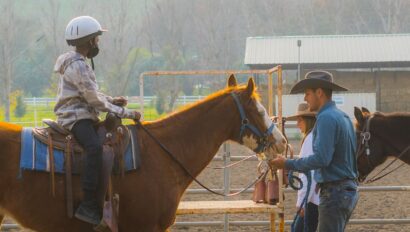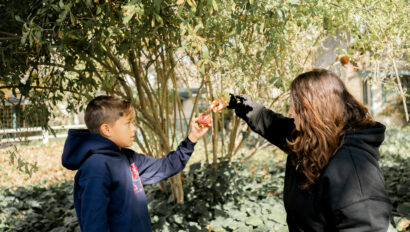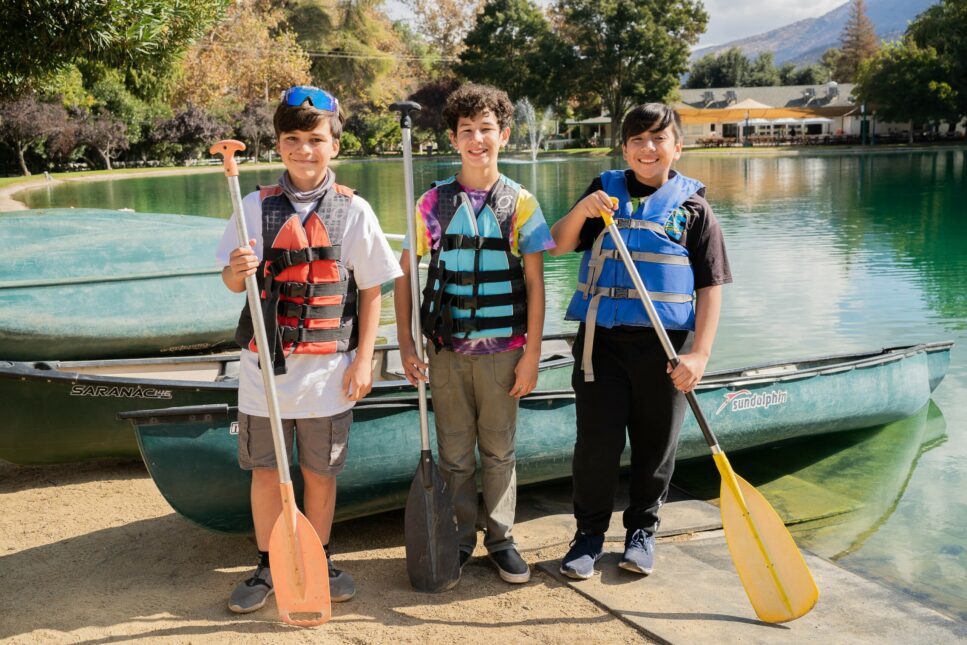
Don’t Rock The Boat!
Canoeing is a fabulous way to get out and enjoy the great outdoors, either by yourself, or with a few friends or family members. It has been a popular pastime for camping and recreation for many years. Active on the Water is a great resource for those interested in the development of the canoe for recreation. Today, canoes are primarily used for recreation, exercise, and sport fishing, and are usually made from aluminum, molded plastic, or fiberglass. Students who participate in Wonder Valley Outdoor Education Center’s canoe course will learn the proper way to canoe and how to safely navigate the waters.
When starting any new sport or activity, there is a learning process involved, and practice makes perfect! To save you a little bit of time on trial and error, here are 10 tips and tricks to make you a canoeing expert in no time. Surprisingly, a lot of these tips can apply to your day-to-day life, as well!
10 Canoeing Tips and Tricks
- Safety First
- Don’t Rock the Boat
- Go With the Flow
- Keep Moving Forward
- Push and Pull
- Work as a Team
- Room for Improvement
- Communication is Key
- Make Your Move
- Reflect on the Experience
1. Safety First
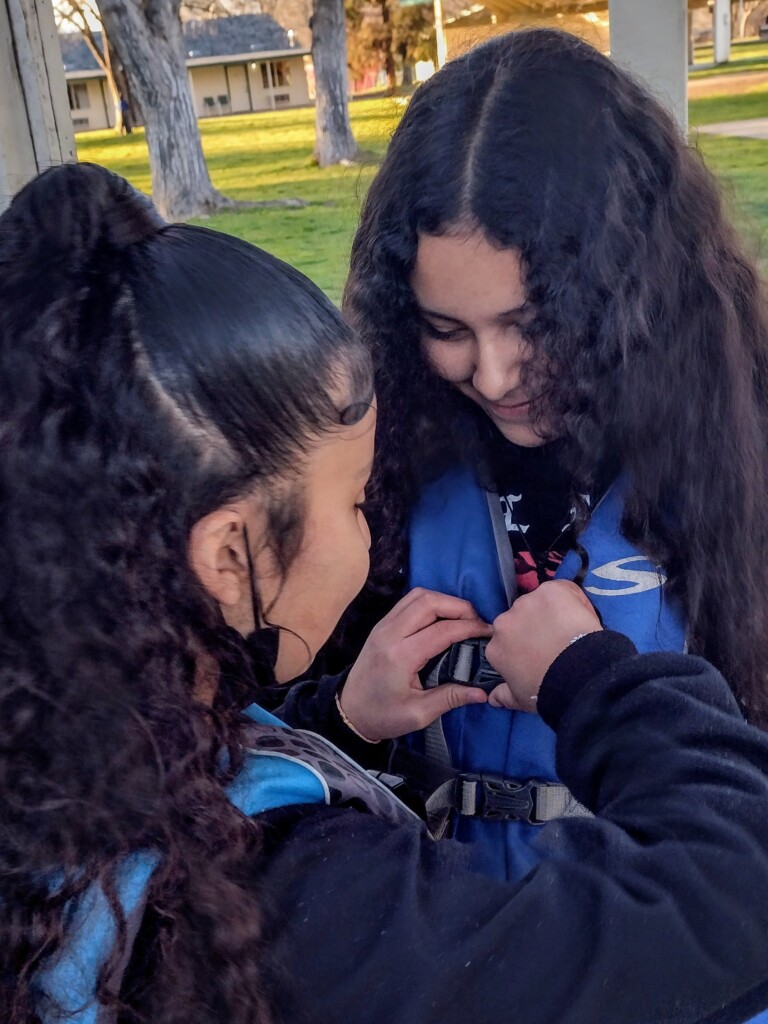
In life and in canoeing, safety should always be a high priority, especially when children are involved! For Wonder Valley Outdoor Education Center’s canoeing class, we require all of our students to wear an appropriately-sized life vest when they are heading out on the water. The students put on their own vests or help one another put them on, then our staff members double-check each vest to make sure that it is put on correctly and is properly fitted before the students are allowed to board the canoes.
Having a safety briefing is also very important. Make sure that you and your team are comfortable with the paddles and how to use them, know about balance, have a plan for communicating with one another, and plan for any emergencies that might arise, i.e. tipping over. Once everyone is ready to go, our staff facilitator assists with boat tending, (sitting on and stabilizing the canoes as the participants board one at a time), then helps push off into the lake for a canoeing adventure!
2. Don’t Rock the Boat
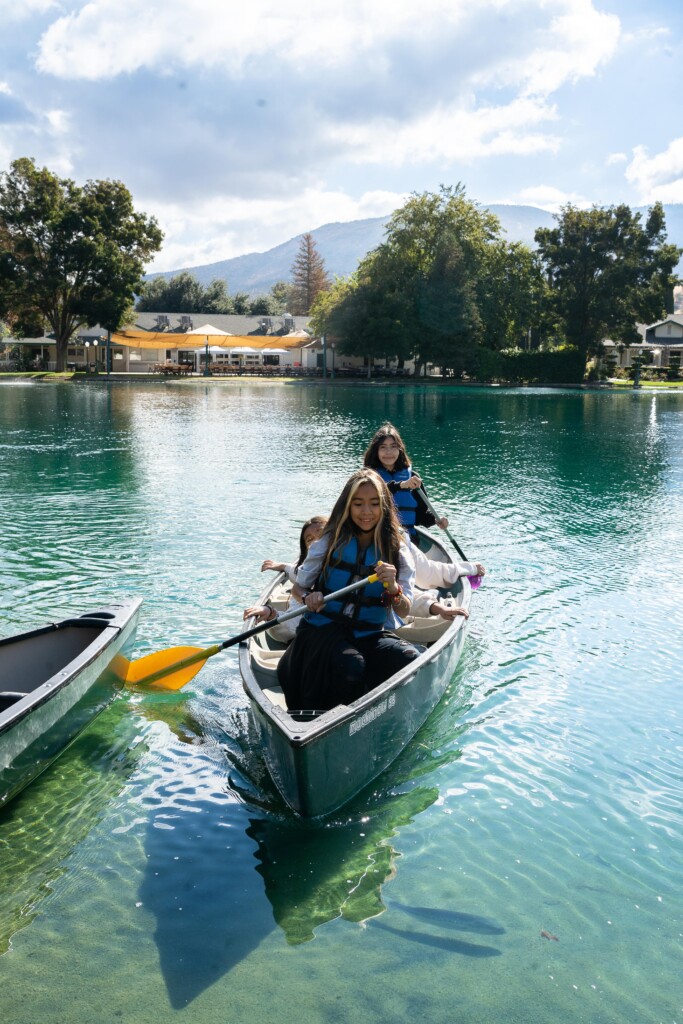
While in real life, there may definitely be circumstances where one should “rock the boat” or shake up the status quo, doing so in a canoe is not recommended! Canoes are harder to tip over than other types of watercraft, such as paddle boards or kayaks, as they usually have taller sides, but if they are tilted far enough to the side in either direction, they can flip over, sending their occupants and their belongings into the water.
To avoid this issue, try to balance the weight evenly in the canoe and keep a low center mass. Don’t try to stand up in the canoe while out on the water. If you must move around in the canoe, stay low and concentrate on balancing the weight with those around you. If you are alone in the canoe, sit in the middle. If there are two people in the canoe, have one sit in the back and one sit in the front, with the heavier person or more experienced paddler in the rear of the boat, called the stern. When paddling, try to stay over the centerline of the canoe and keep your back straight. If you are leaning over, make sure that all of the people in the canoe are not leaning over to look at the same place and at the same time. It can be exciting to look at something in the water next to you, such as a fish, but if everyone leans over too far to look, you might just end up joining the fish in the water!
3. Go with the Flow
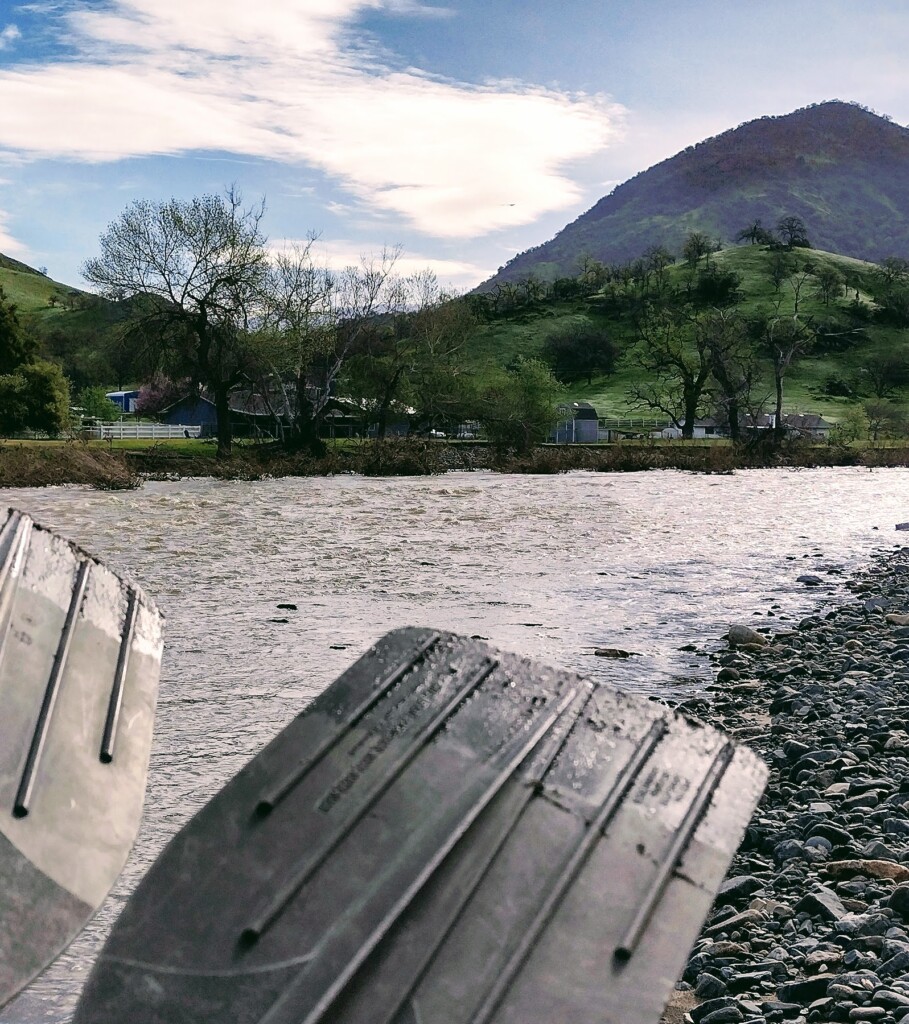
If the body of water you are gliding on has a current, such as a river or creek, it is much easier to paddle in the direction of the water flow than to fight the current going the opposite way. The water will also push you in the direction of the current so you will get to your downriver destination faster.
If you do find the need to go upriver against the current, pick your route carefully. Look for areas where the water is calmer and there are few rapids, rocks, or tree snags. You will need to expend a lot more energy to paddle upriver, so communicate with your team to make sure you are paddling as efficiently as possible. In life, going with the flow is often the same… it is usually easier to do something the way it has been done before than to change it.
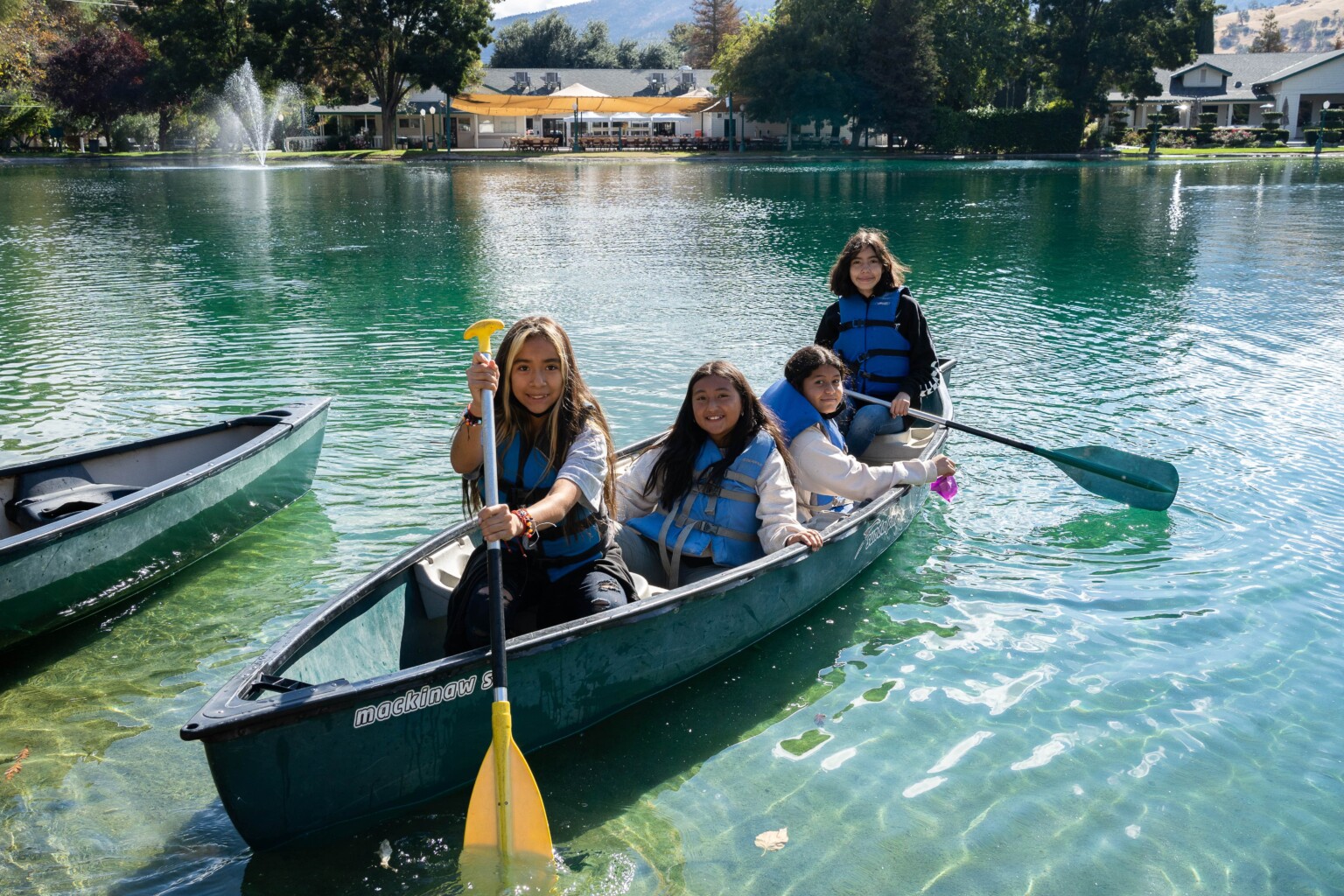
4. Keep Moving Forward
The easiest stroke to learn is the forward stroke in canoeing. Ideally, you want your paddle to be close to vertical when paddling, digging deeply into the water. Surface splashes at a more horizontal angle are not as powerful in getting you where you want to go. Hold the top of the paddle firmly in your hand at eye level. Place your other hand further down the paddle to guide each stroke. Dig into the water in front of you with your arms out over the water, then push through the water front to back by rotating your shoulder, then remove the paddle and repeat. You want the paddling effort to be coming from your torso and not from your arms. The Appalachian Mountain Club is a great online resource for learning the five main canoe strokes.
If you are alone in the canoe, you may need to switch from one side to the other as you paddle to continue to go straight. If you have multiple people in the canoe, divide up evenly so that half of the team are paddling on one side and the other half are paddling on the other side. If you need to turn, paddle only on the opposite side from the direction you would like to go. If you need to go in reverse, dig the paddle into the water behind you and push through the water back to front, then pull the paddle out and repeat.
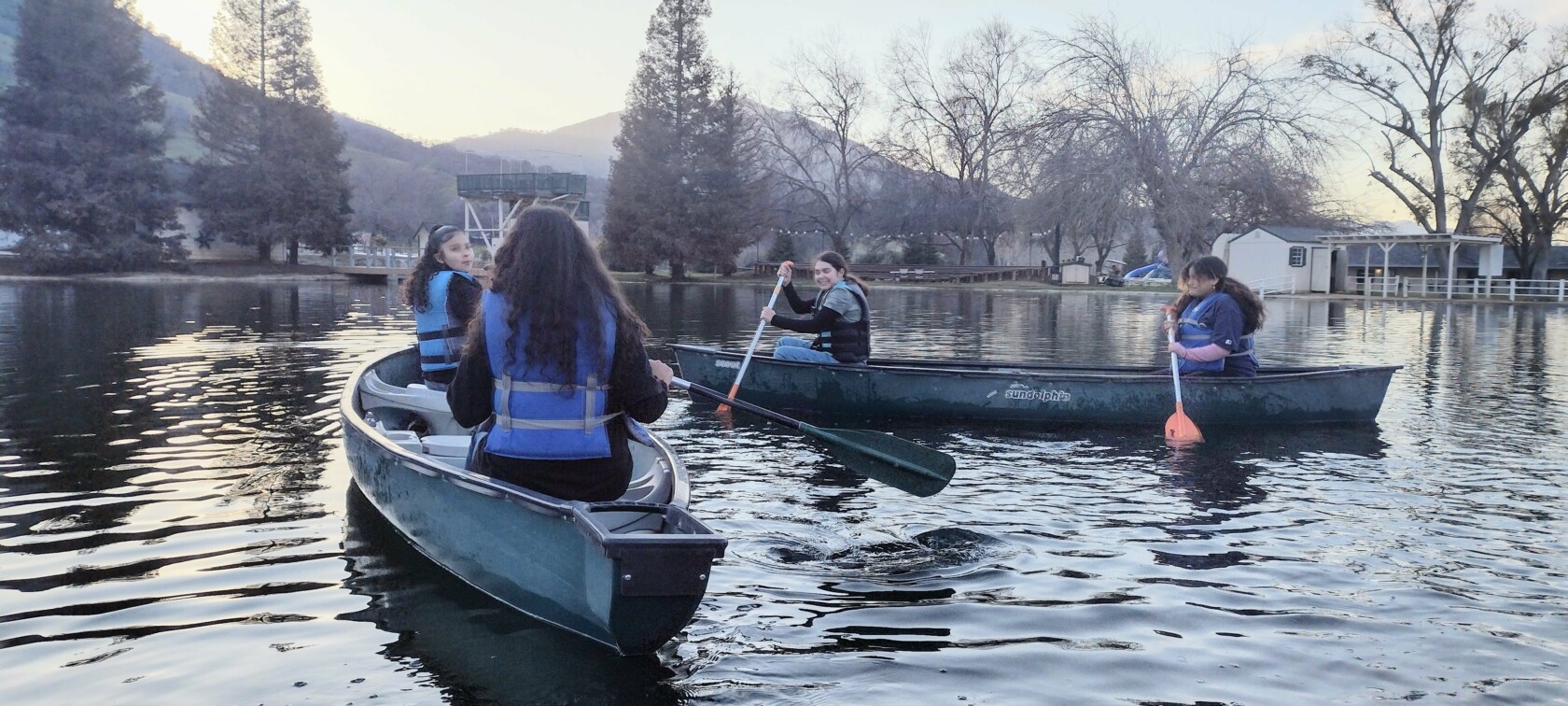
5. Push and Pull
Occasionally, side strokes are required in canoeing in order to come up alongside something, such as a dock, or to push away from something, such as a rock, the riverbed in shallower water, or another approaching canoe. To pull toward something, extend all paddles on the side of the canoe nearest the area you want to get closer to, dig into the water at arm’s length, and pull towards the canoe. When the paddle has reached the canoe, take the paddle out and repeat the process until you have come alongside where you would like to be. This is called the draw stroke. This can also be used by the front (bow) paddler or solo paddler if you want to turn your canoe without having to switch the paddle to the other side. The front paddler can also help execute a turn by using the cross-draw stroke, which would be done by rotating their torso and extending the paddle out to draw the boat toward the opposite side from the side they were paddling on.
If you need to push away from something, extend all paddles on the side of the canoe you want to push away from, dig the canoe paddle into the water nearest the side of the canoe, and push the water out away from the canoe. Take the paddle out and repeat until you are away from the object or area. This is called a pry stroke. It can also be used by the stern paddler (the paddler in the rear position in the canoe) as a way to turn the boat toward the side the paddle is on or slow the canoe down. At the end of a forward stroke, rotate your upper body toward the water so that the canoe is touching the boat, then push the paddle outwards to complete the maneuver.
6. Work as a Team
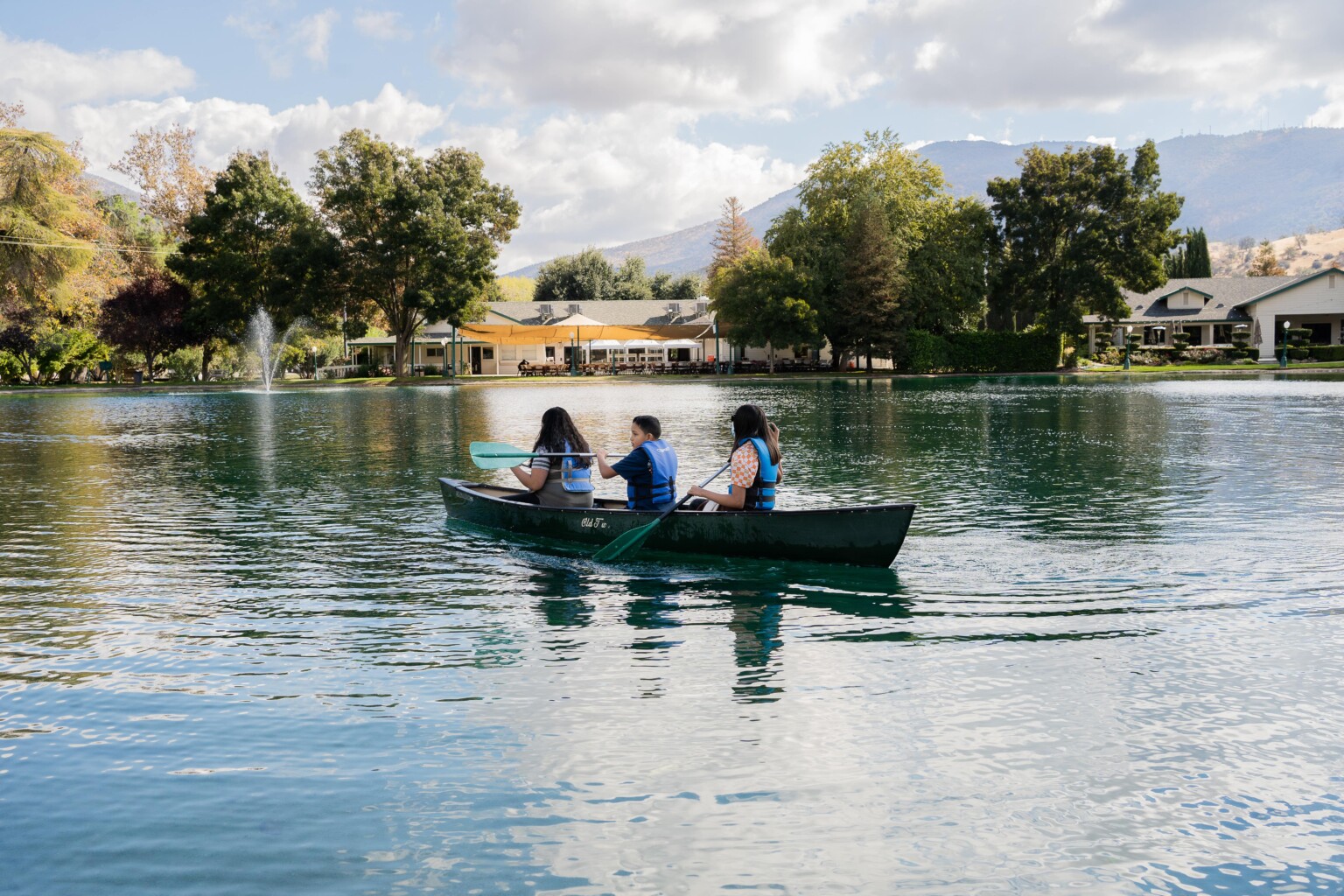
At Wonder Valley, our courses and programs all support the idea of teamwork. Canoeing is a fun and enjoyable way to exercise, explore, and be in nature, even if you are alone. However, for many, the best way to experience canoeing is with a few others with you! If you do have others paddling in the canoe with you, you will need to work as a team to successfully move your canoe where you would like to go. Decide who will paddle on which side of the canoe so that the number of paddlers on each side remains balanced. If you have an odd number of paddlers, have one person switch sides as needed when paddling or be a relief paddler if one of the other paddlers gets tired. To avoid having too much strain on one side of your body, communicate when it is a good time for everyone to paddle on the opposite side. Ideally, it is best to paddle all at the same time so that everyone digs in their paddle to the water at the same time, strokes backward, and picks up the canoe paddle from the water in unison. This will help avoid hitting the paddles of others (or their hands!) as you paddle and provide the most efficient and speedy way to move.
There is also a certain amount of division of labor needed for a canoe team. The stern paddler is the source of the most powerful strokes and is the person steering the canoe. Ideally, you want your most experienced paddler in this position – or, if everyone is at about the same level in terms of experience, the heaviest paddler seated here. The bow paddler also has an important role. This person has the best vantage point to see what is directly ahead of the canoe and can call out which direction the canoe needs to go to avoid rocks, rapids, debris in the water, shallow spots, or general course corrections. Both the stern and bow paddlers also have the ability to turn the boat, if needed – the bow paddler can use the draw or cross draw strokes to turn, and the stern paddler can use the stern pry stroke.
7. Room for Improvement
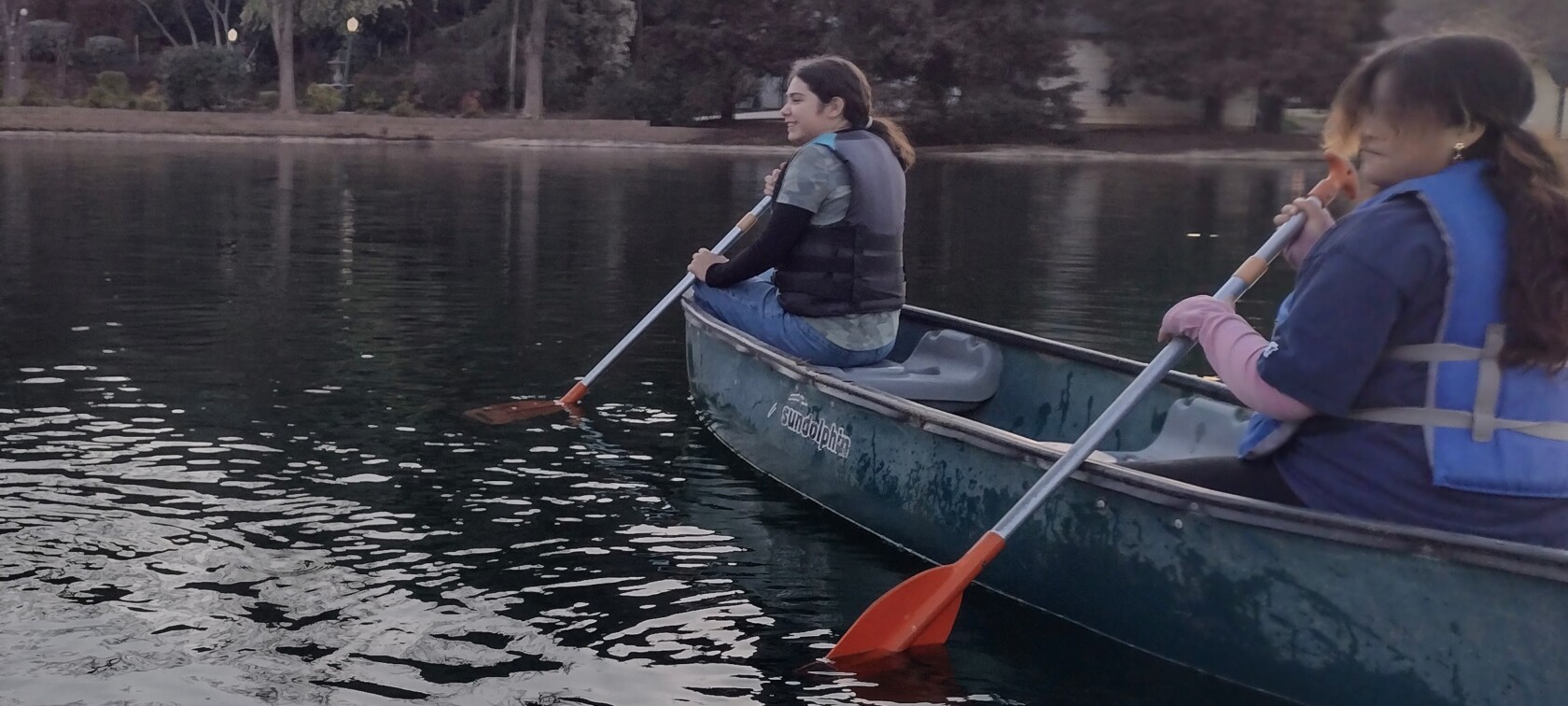
No matter what you take on in life, there are always ways to improve. In canoeing, improvement comes in learning how to steer and increasing efficiency in strokes. One of the easiest ways to increase a team’s efficiency is to implement the “J Stroke.” This is primarily used by the stern paddler. It is a variation on the forward stroke that allows the paddler to not have to expend the extra energy to pick up the paddle out of the water and re-insert it into the water again each time. The J-Stroke, so named because the paddle makes a “J” motion, involves the stern paddler turning the paddle sideways after the forward stroke, and bringing it back forward through the water with the surface area of the paddle facing the canoe, then twisting it 90 degrees to start a new forward stroke. This also helps compensate for the tendency for the boat to turn slightly toward the opposite side from the stern person’s paddle. Using the J-stroke will help the canoe keep going in a straight line. The Appalachian Mountain Club has a nice illustration that helps show how to execute the J-stroke.
Another way to improve efficiency in canoeing is to have all the paddlers continue to work on making their canoe paddle strokes in unison, and gradually increase the speed at which this can be accomplished.
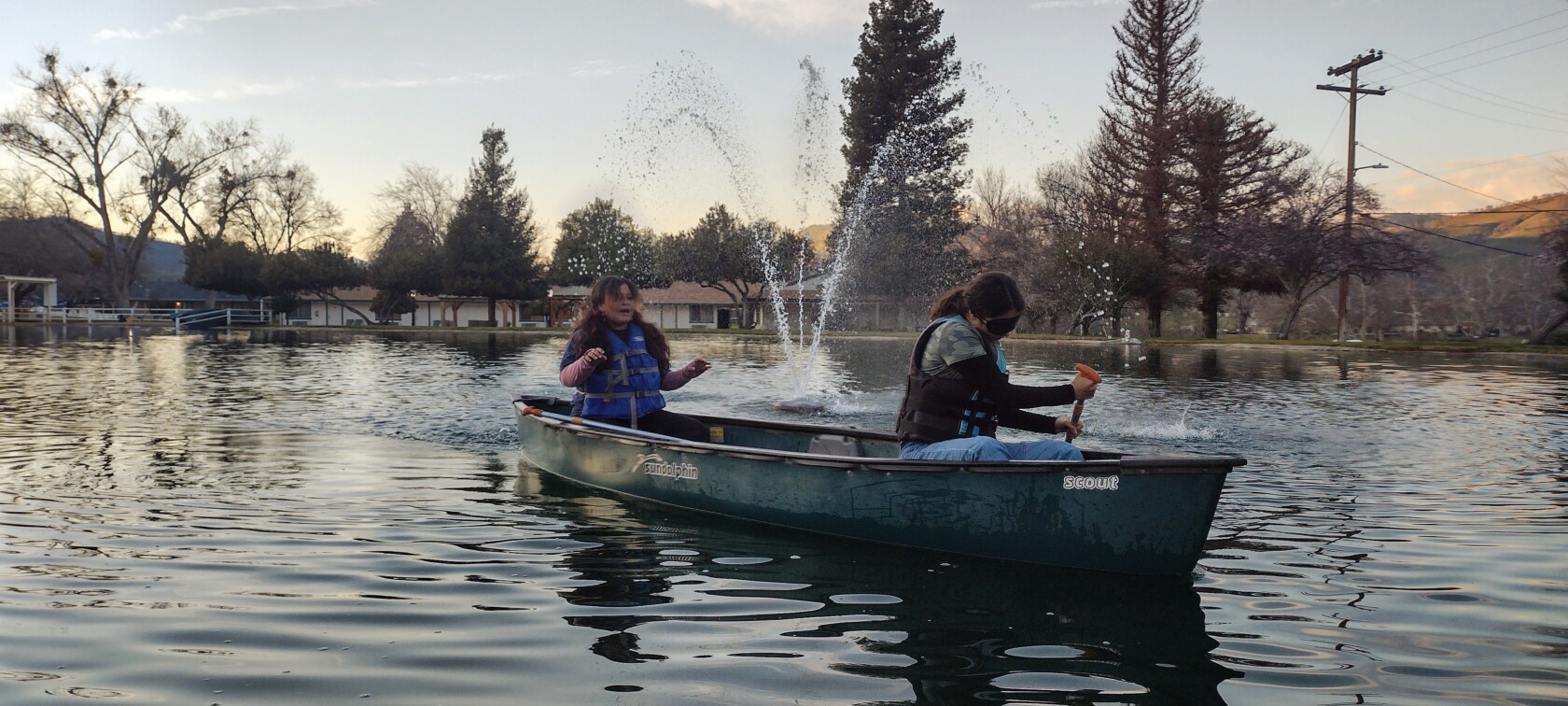
8. Communication is Key
While teamwork is very important in both life and in canoeing, one of the best ways to achieve good teamwork is through effective communication. Yelling at your friends in the canoe will not solve a problem; it is likely to compound it and make your friends feel bad at the same time. Making a plan ahead of time is a great way to start effectively communicating. When the person at the front of the canoe says “go left,” identify what that will mean – does that mean that everyone should paddle on the left (thus making the canoe go to the right) or does that mean that the canoe itself needs to go to the left (so everyone needs to paddle on the right)? Identifying these potential problems before getting on the water will help everyone stay on the same page in terms of knowing what to do.
This is especially important if the water you are paddling on is a little rougher! You might not have time to figure out a plan later when it really counts – and things only get worse if one of your team members begins to panic. Canoeing is best utilized on flatwater (water that is calm, such as a pond or a lake), but can be done on rivers and some rapids, if paddlers are suitably experienced. While the higher sides of a canoe makes it more difficult to flip over on calm water, it can also be a detriment if there are high winds or rough water, as there is more surface area to be caught in with those specific dangers. One of the ways that canoeing can be used for communication and team building is through a “Blind Canoe Race.” At Wonder Valley, this experience is popular for leadership students, corporate retreat guests, and everyone in between. Teams of 2-4 people are given five minutes to come up with a plan to travel from one end of Dalton Pond, around the water spout, and back before the other teams. The catch is that only one person in the canoe can see, and that person does not have a paddle. The other people in the boat have paddles, but are blindfolded. At the end of the experience, teams are given time to reflect on what they learned about themselves, about working together, and about how best to communicate with one another.
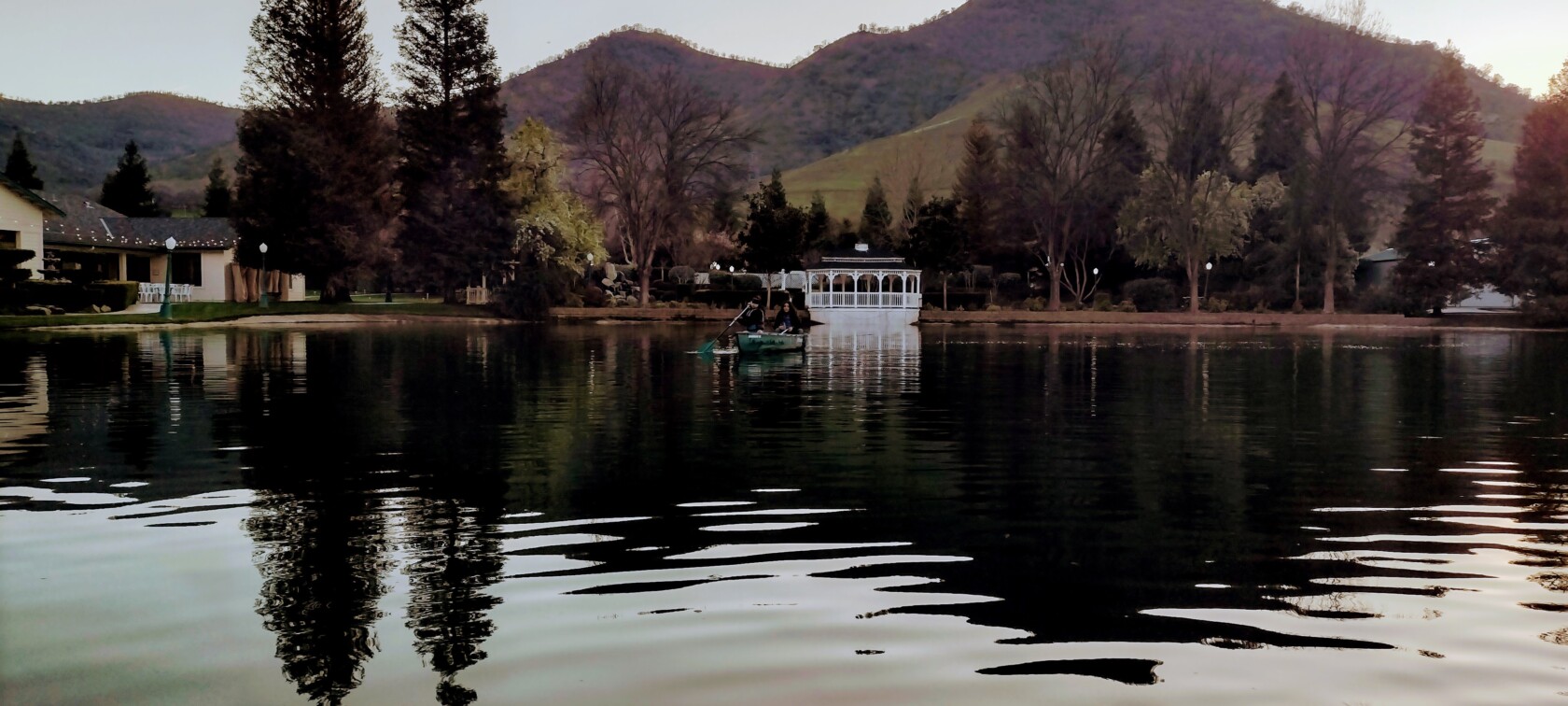
9. Make Your Move
When it is time for your groups’ canoe adventure to come to an end, you will need to coordinate with your team to come in for a landing. If you are ending your canoe experience at a dock, the bow paddler can help communicate with the team to line them up for a landing. Draw strokes can be used to pull the canoe close enough to the dock to allow the boat to be held to the dock or tied off to allow for the occupants to disembark. If disembarking on a dock, have only one person stand up and exit the canoe at a time, and as they lean across to the dock to get out, have the others in the canoe lean the other way to compensate for the weight fluctuation, then move back to center when the person is no longer in the canoe. Repeat until all occupants have safely exited the canoe.
If you are pulling up to dry land by beaching your canoe, have the bow paddler determine a good straight stretch of land without obstacles in your path to head toward. That person will need to direct their team to paddle straight for the land at a 90 degree angle to the selected beach. If you approach at a lesser angle, there is a greater chance that the canoe will flip over when it hits the soil. While your occupants will be able to stand up as the water level will be shallow, they will still be very wet! Once the angle has been secured, have the paddlers paddle strongly toward the beach. Ideally, by the time the water gets too shallow to allow for effective paddling, the canoe’s momentum will carry it the rest of the way up on the shore. If there is a boat tender, they will stabilize the boat for exiting, otherwise have everyone stay seated and still while the bow paddler steps off the front of the canoe onto the shore. They can pull the canoe further up, then sit on the canoe, straddling the bow with one foot firmly planted on each side of the canoe to stabilize it as the other occupants stand up and get out, one at a time. When everyone has exited the canoe, it will be easy to drag it the rest of the way out of the water.
10. Reflect on the Experience
From outdoor education to corporate meetings, there has been a trend toward reflecting with one’s team at the end of a session. This allows for more effective communication and gives the participants a chance to share their personal experiences with the task, what they learned, what challenges they faced, and how to do better next time. Even if someone is not participating in a Blind Canoe Race, it is highly encouraged to have a similar reflection after canoeing, if for no other reason than to cement the memories of a fun, relaxing experience!
Now that you’ve gotten a glimpse at Wonder Valley Outdoor Education Center’s best canoe tips and safety procedures, it’s time to hit the water! Learn more about our offerings and class courses, designed to bring the classroom outdoors.

